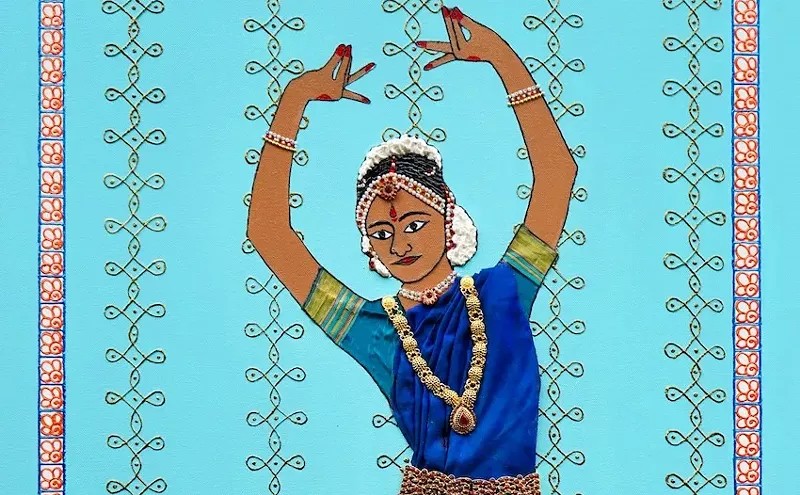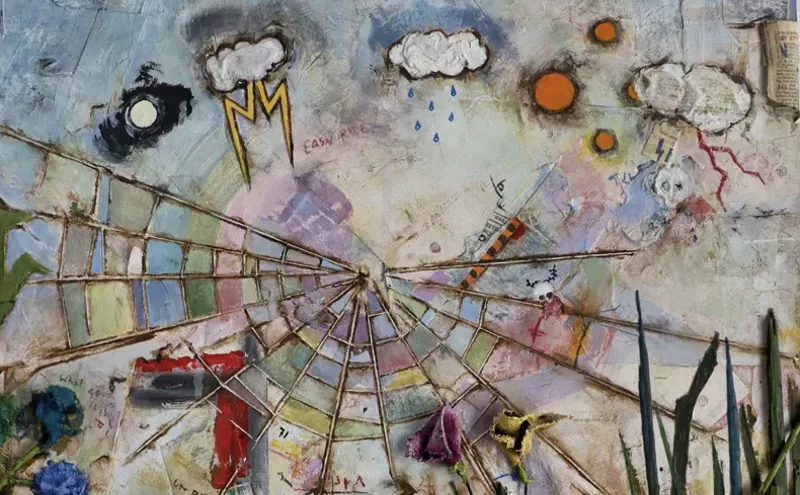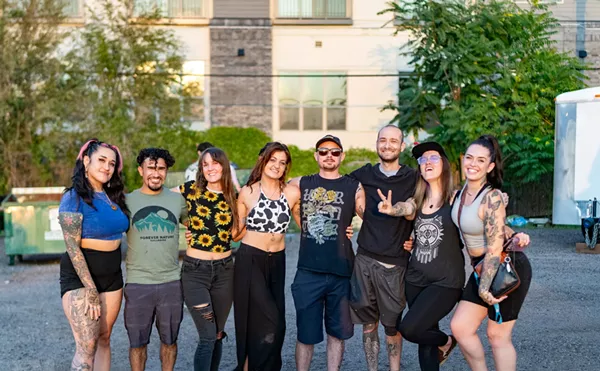Westword: What is the idea behind the MTVTM video series that you've curated for Denver Digerati's Friday Flash No. 9 Series?
Milton Melvin Croissant III: I've done work for Denver Digerati before on some of their other programs and I have an art-connected relationship with Ivar Zeile who runs it. I do music videos for a living — or I'm trying to (laughs) — and it's a passion of mine. I wanted to do more with Denver Digerati because it is such a cool platform for public art. I approached Ivar about doing something and he asked me to curate a show — he knew about my work with music videos and my relationship with the music community. We thought it would be cool to have a music video-themed thing and it wasn't just straight-up music videos; some of the music videos are musicians making videos with music. Some are a little more experimental when it comes to the definition of a "music video."
"Duet" by Rubik from Milton Croissant III on Vimeo.
That was something I was wondering about — some of these works are obviously collaborations between musicians and artists, but some are just visual pieces made by musicians?Yeah. I mean, there are so many different approaches to doing this format. How I sometimes read a "music video" or a video made for music is sort of like another layer of art made in response to an original artwork; it’s work that’s an interpretation, another aesthetic level to experience that original work. Kind of like if you read philosophy or read some work of art, you also want to read a text about it — it can deepen an understanding of an original text. I kind of see music videos that are made in response to those things as a deeper way to understand a musical work of art. There's a translation going on.
Is everything you're showing purely animation of some kind?
Denver Digerati is a platform for public video art, but it is also geared towards animation and specifically digital animation. But I mean, drawn animation is digital now, too. So there's this hinterland between how you define digital animation versus analog animation. Some of the work is edited in a certain way — like Nick Vyssotski's work uses the action and movement-oriented backgrounds in anime and photoshops out all of the characters and edits it all together. So it's animation but it's like edited-together animation. Some of it is 3D animation like my work and Max Eilbacher's work; some is 2D animation. It's all kinds of animation.
You're a musician yourself. Does that have any bearing on the way you create the visual work you do for other musicians? Is making a music video for a musician a collaborative effort or just your own vision?
For the most part, I am approached because people see what I do and enjoy what I do. They want me to have some control in how it's going to look. Generally, it comes down to me having a conversation with someone and getting an idea of where they are coming from when they make music — get into their head a little bit. But it's more of a conversation than someone saying, "This is where I want to see a skull shatter" or something. (Laughs.) It's not a design project where you have to have a treatment and lay out your vision; it's a conversation.
Of course, some musicians want to see certain things in their videos. But for the most part with the stuff I've made — and for the piece that I made for this series, a video for a song called "Duet" by Shaun Yule, who goes by Rubik — it's just me responding to the music. Yule is a London-based electronic musician who does some really weird stuff. The music is really, really weird and not in the typical weird ways you would expect — it has that "I don't know if I like this" kind of sound. (Laughs.)
How did you go about choosing the artists you decided to feature in your curation of MTVTM? There are artists involved from Colorado — like Colin Ward and Vid Kidz — where you're from, but also from across the world.
There are three artists featured from Baltimore, where I just moved to New York from. I wanted to show some people I had met there that were younger artists from more underground scenes; I wanted to bring them into the fold. But I also wanted to have the big jammers like Lightning Bolt involved — I met Lale Westvind (who made the video for Lighting Bolt's "The Metal East," which is featured in the showing) through mutual friends and we screened animations together in a show earlier this year. She's a really talented comic artist. It was about reaching out through the networks that already existed in my life — some were through the music scene and some were through other underground scenes. I drew from those and asked around — like, Nicole Ginelli from Chicago, who I didn't know before. I asked people I knew in other cities what was going on and who were the good video artists working right now. I was really surprised by what I found. Maybe half of the video artists are musicians as well, having hands in both fields, which I think is cool.
The quality and continuity of visual art and music can sometimes be lost or dulled when people only experience them through the small screens and limited audio of a laptop. I feel like video art can come through a little bit better on the computer, since much of it is made by and for the technology. But being able to see work usually reserved for an individual experience in this public way — and on a massive screen — with other people is really cool.
Oh, absolutely. It's kind of what I feel like the cinema really started off as — it was a place where the public could view things. It was like a media public square. I like the idea of people congregating and staring up at a screen together — which is probably weird to say. (Laughs.) But it's an alternative to the closed-off, head-down, sideways-on-your-bed-watching-a-video-on-your-phone experience. Or watching something resting on your belly — the living room of America now is someone's iPad on their belly.
Friday Flash No. 9: MTVTM goes down at 7 p.m. Friday, June 19, with a presentation by Denver Digerati director Ivar Zeile and commentary from Croissant at the Commons on Champa, 1245 Champa Street; the formal screening of the music and video series begins at 8 p.m. at 14th and Champa. The public is then invited back to the Commons for a dance party with DJ Daugherty at 9 p.m. All events are free; for more information, visit the Denver Digerati website; to see more of Croissant's work, see his homepage.
Be my voyeur (or better yet, let me stalk you) on Twitter: @cocodavies












